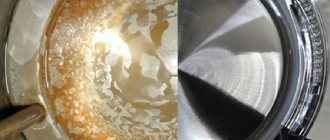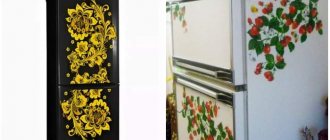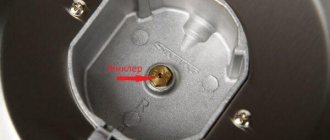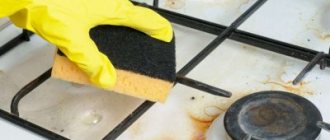Knowing how to grind coffee without a coffee grinder will be useful for every connoisseur of the aromatic drink. There can be many situations when you don’t have a special machine for grinding grains at hand, and understanding how to properly achieve the desired grinding using improvised means will help you find a way out of the situation.
The resin of coffee beans affects a number of indicators, ranging from the extraction process (transfer of trace elements and beneficial components) to strength, taste and aroma. If you study the labels on coffee packages, you can learn in advance about the grinding and preparation methods recommended by manufacturers. By following them, you will really be able to get a drink of the desired strength and taste.
Grinding Options: What You Need to Know
Even if you grind coffee without a coffee grinder, you can achieve the aromatic properties and taste of the bean oils contained in it. The choice of grind type affects how the drink is brewed. By adjusting its fineness, you can significantly influence the taste and quality of coffee. There are the following grinding options:
- thin;
- ultra-thin;
- rude;
- average;
- large;
- powder.
Coarse and coarse grinding does not guarantee the rich taste of the coffee drink and does not have the best effect on its strength. The richest and strongest coffee is obtained from beans ground into a fine powder. It is from this that aromatic espresso is prepared. On the other hand, grinding too fine is not suitable for all coffee makers. If a drip type machine is used, the resulting drink will have a bitter, burnt taste.
Those who like coarse grinding are recommended to use geyser-type coffee makers or French presses.
Medium grind coffee is also suitable for this type of machine. Fine grinding in these cases is undesirable, since the filter will fail faster due to fine grounds.
In general, it is the medium grind that is considered universal. It is suitable for most coffee machines and can be used for brewing in a Turk. Coffee beans ground in this way last longer and are suitable for preparing drinks in a variety of ways, from espresso to latte.
Coffee, ground into powder and ultra-fine grinding, is ideal for cooking in a cezve or Turk on sand. The famous Turkish drink, for example, is made from grains ground to a powder. But you won’t be able to grind coffee beans to this state without a coffee grinder.
You might be interested in: Serving utensils for serving coffee
What options for manual grinding are used and is it possible to use improvised tools and devices to obtain coffee mass suitable for preparing the drink? There are several proven methods that allow you to grind coffee at home without machines.
Using household appliances
Meat grinder
Let's start with how to grind coffee without a coffee grinder using a meat grinder. This device has sharp knives that easily crush small grains. A mechanical or electrical model is suitable.
Modern devices have a power of 500-2000 watts and an operating speed of 1-2 kg per minute. It will take a couple of minutes to grind the grains for 2-3 servings.
But consider the type of knives in the device. Their characteristics depend on the model of the meat grinder. It is better to crush coffee in a meat grinder using spice knives.
To grind coarsely, it is enough to start the mechanism once. If you need to grind coffee for espresso, run the beans three times.
Rinse and dry the meat grinder thoroughly before use. Especially if raw meat or fish were twisted in the device before. Odors will be absorbed into the grains and will kill the aroma.
Brew coffee ground in a meat grinder over a fire or in a coffee machine. A French press or drip coffee maker will not work. The powder is not fine enough for them.
rolling pin
Now about how to grind coffee at home with a rolling pin. It is better to take a rolling pin in the form of a spindle and a cylinder.
Measure out the required amount of coffee and pour it into a thick, clean bag. You can use plastic or for freezing food.
Place the bag on a flat, hard surface and spread the grains into a single layer. If there are too many of them, they will choke badly. It is better to grind in small portions.
Interesting! Various popular types of coffee, their descriptions and methods of preparation in coffee shops
If you don't have a bag, sheets of parchment will do.
Tap the coffee beans with a rolling pin for a few minutes to break them into small pieces. This will make it easier to chop.
Roll out the crushed mass with a rolling pin until completely chopped. The result will be a medium grind powder.
Mechanical mill
If you don't have a coffee grinder, you can grind the beans using a spice grinder. This compact device grinds coffee beans to a medium grind powder.
The only drawback of the mill is its small size. The coffee beans are large, so you won’t be able to grind a large portion. You will have to use the device every time you want to brew a delicious drink.
The spices have a persistent aroma. Therefore, be sure to wash the mill if you are going to replace your coffee grinder with it. Otherwise, the coffee will acquire a peculiar taste.
Pour the grains into the mill and start grinding. If after the first grinding the particles are large, repeat the procedure once or twice.
The mill allows you to grind grains with a medium grind. You can make Turkish coffee from them.
Food processor
You can replace the coffee grinder with a food processor. But not everyone will do. The kit should include a meat grinder attachment with sharp knives.
Other attachments will not cope with the task and you may break the combine.
Rinse the device and wipe dry with a paper towel. If food particles remain in the processor, the ground raw materials will spoil.
Coffee beans are ground in a closed container to prevent them from scattering.
The food processor can grind coffee beans to medium size. A powdery consistency will not be obtained even if crushing is repeated three times.
Blender
A blender can replace a coffee grinder. A submersible model will not work, only a stationary one. Read more in the article “Can I grind coffee in a blender?”
Heavily roasted beans chalk more easily.
Cautions when using household appliances
Each household appliance has its own purpose. Some cut vegetables, others chop, and still others grind. There is no need to constantly use them to grind coffee beans.
Interesting! Which coffee grind is best for a carob coffee maker?
If you regularly use a meat grinder or blender for other purposes, this will reduce its service life. Their knives are not designed for such effort. They will become dull or deformed.
Therefore, use such household appliances for grains only in emergency cases.
Be sure to wash your utensils with detergent before and after grinding. Food particles caught in the grinding process will spoil the taste of the drink made from crushed grains. In the worst case, you can get poisoned.
Mechanical salt and pepper grinder - an affordable alternative to a coffee grinder
Almost every home has a mechanical pepper mill, with which you can turn coffee beans into medium-grind powder in a short time and without visible effort.
A mill is used to grind small portions of beans, usually one or two cups. The advantage of this method is its simplicity and accessibility. In addition, you can always use freshly ground grains before brewing the drink.
The disadvantage is that coffee beans cannot be ground into fine powder or powder even if you pass them through the mill mechanism several times.
Instructions for grinding beans
How to properly grind coffee in an electric coffee grinder? To do this, you must follow the following procedure:
- Prepare a coffee grinder.
- Pour grains into it.
- Turn on the device.
- Record the time: 10 seconds – coarse grind, 13 seconds – medium; 15-20 seconds – fine and more than 30 seconds – ultra-fine.
- Open the lid and pour out the ground grains.
Advice! When using a coffee grinder with a small volume of beans, you can slightly rock the device so that the knives grind the raw materials evenly.
Blender - a universal kitchen assistant
A simple and effective way to grind coffee is to use a familiar blender with a universal set of functions. When choosing a device, you need to take into account the location of the knives - high from the blade of the wall. This fact affects the quality of grain grinding. Partially falling down, the grains fall apart, but do not grind.
The main difference between a blender and a coffee grinder is the location of the knives. Designed for torsion grinding, both machines operate on different principles. But despite the fact that the blender is aimed at processing products into a semi-liquid state, it will cope with grinding coffee beans if you do this procedure several times. The finer you can grind the beans, the more aromatic the resulting drink will be.
Choosing grains
Despite the huge variety of coffee blends, you can most often find two of the most popular varieties on sale - Arabica and Rabusta.
- Arabica is valued for the rich aroma produced by grains rich in acids, essential oils and sugar.
- Rabusta is a little faded compared to Arabica, but has a high concentration of caffeine with a characteristic bitterness.
When choosing coffee beans, you first need to pay attention to the packaging. The bag must be airtight, with well-sealed corners and have a release valve. It may look like a round embossed impression with a hole. The special design of the valve ensures the release of carbon dioxide and protection from the ingress of oxygen, which can literally “age” the coffee and make the drink rancid.
Simple criteria for evaluating packaged grain:
- the aroma should be bright and “rich”;
- uniform roasting (best achieved by processing with a stream of hot air);
- all grains must be the same size and color;
- no visible defects (broken or split fragments).
Important! The roasting and packaging period should not exceed 4 months, otherwise there is a risk of getting a drink with weak taste.
Hammer and rolling pin - handy tools to help
Compared to all the options that allow you to grind coffee without a coffee grinder, a hammer is the simplest and most non-standard. It is used if it is not possible to use more convenient devices.
To obtain a powder suitable for brewing or steaming, in addition to a hammer, you will need thick paper. The coffee beans are wrapped in paper and tapped with a hammer, preventing the beans from scattering. The proven old-fashioned method will allow you to split the grains and prepare them for making an aromatic drink. You can try grinding well-roasted grains using the same paper and rolling pin.
You might be interested in Chemex for brewing coffee
Terms and rules for storing ground coffee
To always be able to brew high-quality coffee, it is important to adhere to the rules for purchasing roasted beans. If it is possible to order raw materials for two to three days of roasting in a sealed ziplock bag, then such grains can be safely ground and cooked within the next month. The condition will retain maximum aroma and will not oxidize under the influence of oxygen when opened for a short time.
Important! Gourmets recommend not grinding beans “in reserve,” since when the beans are destroyed during grinding, the coffee oil evaporates very quickly, even if the storage container has a tight rubberized lid.
The correct solution would be to do a full cycle of preparing the drink, which will begin with grinding and end with brewing.
Mortar for grinding - a method proven over centuries
An even more ancient method of grinding coffee beans is a mortar. To achieve the desired result you will have to spend time and put in effort, but the effect is worth it. The process of grinding coffee this way is the most natural. This is exactly how our ancestors achieved the desired consistency of products in their time.
Today, grinding grains in this way is not only possible. The output will be a high-quality powder mixture, suitable for brewing a drink according to various recipes. To make it easier to regulate the degree of grinding, coffee beans are ground in small portions immediately before preparation.
Types of grinding
When brewing a drink, it is important to choose the right grind. It comes in five types:
- rude
- large;
- average;
- thin;
- extra-thin.
Large particles fully reveal the aroma when brewed in a coffee pot or French press. The medium-sized particles are similar in appearance to granulated sugar and are ideal for use in drip coffee makers. How to prepare the drink is described in the article “Types of coffee grinding and what it affects.”
If we prepare the drink in coffee machines or geyser coffee makers, it is better to use the thin version. The ideal Turkish drink is made from grains with a powdery consistency.
A meat grinder is a reliable and easy way to grind grains
Another noteworthy method for grinding coffee is using a meat grinder. Both electric and mechanical meat grinders are found in everyone’s home, so this method can be compared to using a blender in terms of efficiency, accessibility and speed of obtaining results.
Depending on the model of the device, you can select suitable knife options for different types of products. For example, modern machines always come with a set of knives for spices. They are ideal for grinding coffee beans, and if you run them through the mechanism twice or even three times, you can achieve a fine grind for espresso.
Before grinding beans, all parts of the meat grinder must be thoroughly rinsed, since the odors of previously ground products can get into the coffee if not properly processed.
So, if it is not possible to grind coffee beans in a special coffee grinder, to achieve the result you can use:
- mortar;
- blender;
- meat grinder;
- hammer or rolling pin;
- mechanical mill.
It is not so important which version of the device for resining grains was chosen, the main thing is the process itself, which for true connoisseurs of the aromatic drink resembles a ritual, unhurried, and enjoyable.
To make coffee especially tasty and rich, it is better to grind it right before preparation, preventing the aroma from evaporating. Store ground grains in vacuum packaging or in a container with a tight-fitting lid for no more than five days in a cool, dark place. Green coffee lasts longer than regular black coffee.
other methods
Hammer
You can grind coffee using a hammer. This simple grinding option produces medium-sized particles in a couple of minutes. Use a hammer or meat chop tool.
Be careful not to knock your fingers off. Use a hammer only as a last resort.
Wrap the coffee beans in a piece of paper or a thick bag to prevent them from flying around. Tap the raw material firmly with a hammer. To complete grinding you will have to spend 5-7 minutes.
The result will be a medium grind powder.
Mortar
Now about how to grind coffee with a pestle and mortar. The method is effective, but long. You'll have to make an effort. But you can grind the grains at any grinding level
Measure out the required amount of raw material and crush vigorously with a pestle. It will take 4-5 minutes.
To obtain fine particles, use a small amount of beans. If you use a lot, the grind will be coarser.
Small mortars will be able to grind coffee beans for just a couple of servings. But it will not be possible to achieve perfect uniformity. Therefore, the taste and aroma will not be fully revealed.
Manual grinding
Grain raw materials can be crushed with a knife. Place the beans on the board in a single layer and press down firmly with the blade.
Be prepared that chopping with a knife is a difficult method. It requires time and physical effort. Take a tool with the widest possible blade. Place the knife horizontally, with the sharp side facing away from you.
Interesting! How to drink espresso with water correctly
More options
It is much easier to crush with a large stone. Wrap it in a clean, dry cloth and crush the beans using pressing movements.
Using a stone you can get particles of any size. The harder you press, the smaller they will be.
A garlic crusher is suitable for crushing. But this method is time-consuming. No more than 30 grains are placed in the crusher at a time. The resulting particles are of medium size.
You can use a metal bowl, plate, or other hard object with a flat side. The main thing is to carry out the procedure on a hard surface.
Manual grinding methods
While automatic and semi-automatic methods speed up the process, manual methods also work at home, but take longer.
For you:
Coffee with lemon: what are its benefits and how to prepare it
What hand tools are there:
- hammer;
- rolling pin;
- mortar and pestle.
As for manual methods, they require more concentration and caution.
Hammer
The first thing we prepare is a metal hammer and a board. If you don't have a heavy hammer, use a chop mallet. For safety and to prevent the grinding from scattering all over the kitchen, we place all the grains in a bag: we use a special bag or paper folded several times. The denser the polyethylene, the better the grinding will be.
What we do next:
- put the coffee in the bag and close it;
- distribute the coffee into the bag - it lies on the board;
- hit with a hammer with short strokes.
To ensure that the grains are crushed evenly, shake them periodically in the bag. The result is a medium or coarse grind. Using a hammer you can get a lot of product, but not the best quality.
rolling pin
A similar method for grinding grains is using a rolling pin. Place the grains in a bag or paper folded several times. We place the package on a board, and then press the contents using a rolling pin. To crush the product, it is necessary to carry out one action several times. The method is similar to rolling out dough.
The biggest drawback is that the grind will always be coarse. The result will be average-tasting coffee without a strong aroma.
Mortar and pestle
The last method for crushing coffee beans at home is to use a mortar and pestle. Typically, a mortar is used to prepare spices and grind them into dust. Coffee can also be interrupted, but in very small quantities. The resulting product will be unevenly beaten: uniformity will not be achieved.
Stupas also vary in material and volume. The stronger the material, the better the coffee will be. The best option is a stone mortar. First we crush all the grains, then we try to grind them to the finest powder.
Using a heavy mortar you can achieve a fine grind. It makes a delicious, homemade espresso. The disadvantages of the method include the labor intensity of the process and the time it takes to complete it. Of all the methods, the pestle method takes the longest.











